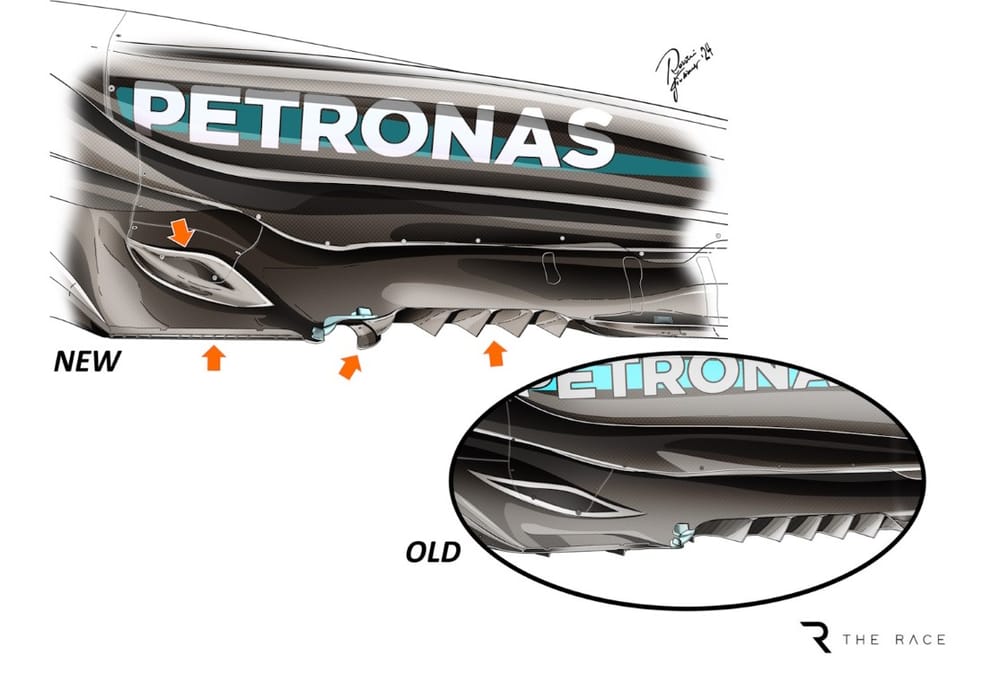Up Next

Mercedes will revert to its old-specification Formula 1 floor for the Azerbaijan Grand Prix weekend amid doubts about the upgraded version that first ran at Spa before the August break, with Lewis Hamilton revealing his "gut feeling" is that the package has created problems.
Both Hamilton and George Russell will use the earlier version of the floor following fluctuations in the upgraded W15's performance at Spa, Zandvoort and Monza.
The floor wasn't raced in Belgium after being trialled on Friday, then was deployed all throughout Mercedes' very patchy Dutch and Italian Grand Prix weekends.
While the car has been quick at times with the new floor, it has also been erratic, with team principal Toto Wolff saying after the race at Monza "we are able to extract a single lap, which in principle is good news, but then the balance isn't good enough to keep the tyres happy for a race".
That's borne out by the results, as in the two races that Mercedes has run the floor it has not finished higher than fifth.
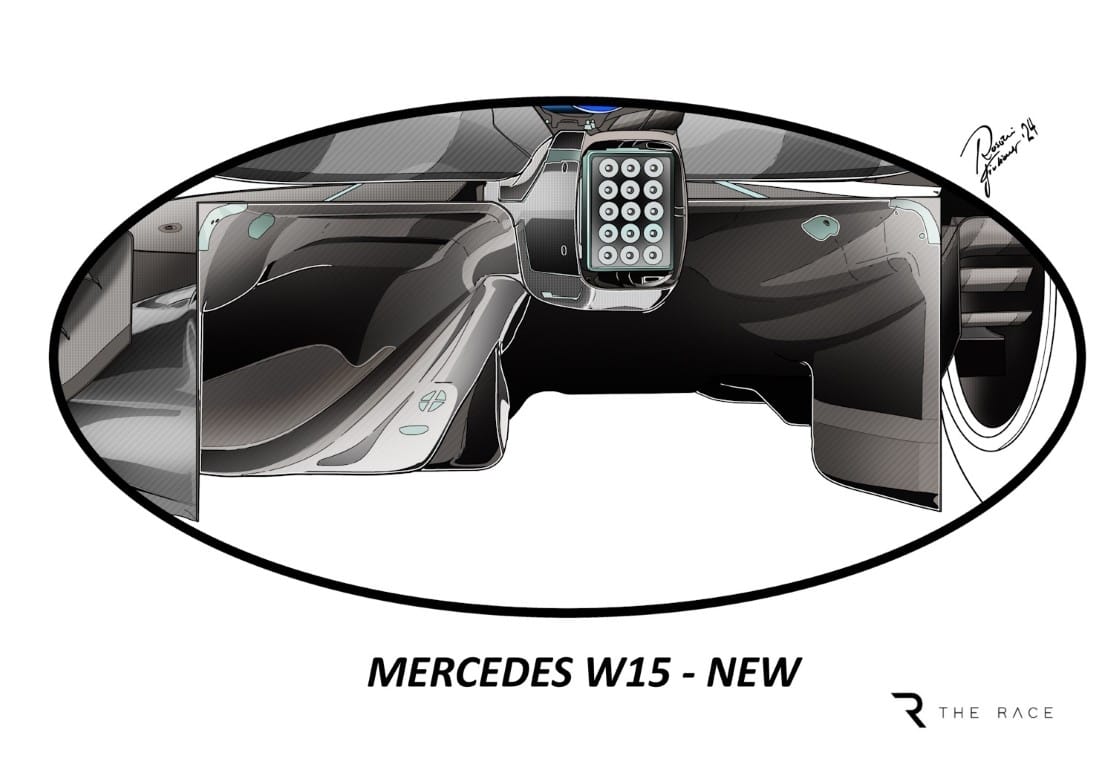
"There's lots of question marks, we're trying to understand it," said Hamilton when asked if the team has isolated the cause of its problems. "There could be a number of things, it could be track-dependent, it could be the upgrade.
"My gut's telling me it's probably the upgrade. It's hard to see the difference between the two [specifications] but we're going to, this weekend, roll back on some of it and see whether or not we can spot it. There's a lot of work going on just to analyse it because it really gives the team a direction of where they're going in development, not only this car but for the next year as well."
Russell was more reserved in his judgement, but did ultimately concede his team-mate's hunch might be correct. That serves to underline this is part of the learning process for Mercedes, with the data gathered an important step that will influence its long-term development direction.
"We'll see this weekend," said Russell when Hamilton's opinion was put to him. "The upgrade wasn't a substantial performance improvement and sometimes you've got to look at things just objectively. We brought a new floor, we dropped in performance and that was the main thing that changed.
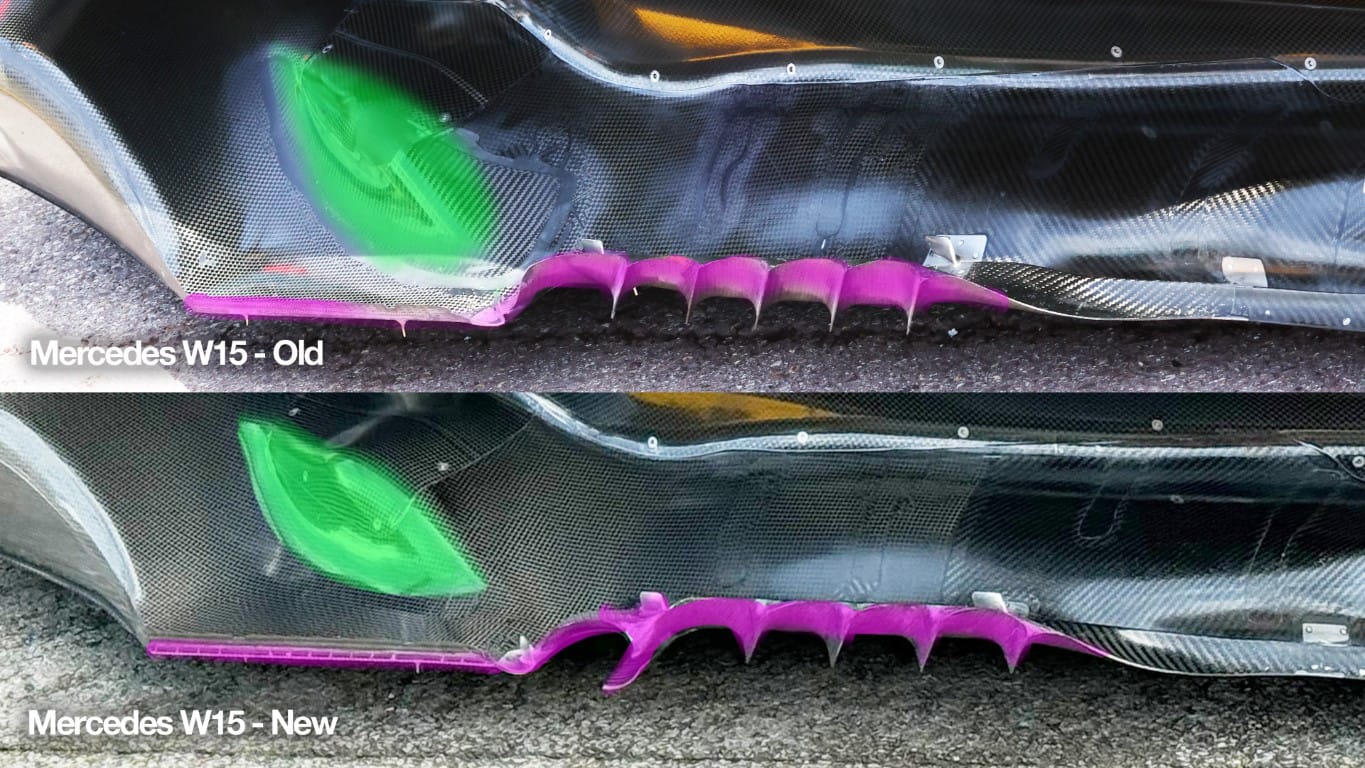
"We knew the upgrade wasn't going to set the world on fire, it was just another step in the direction that we'd been pursuing. So reversing back to the sort of pre-Spa iteration of floor [is logical as], if everything were to be absolutely correct on paper, it's a small delta. So it’s better the devil you know, sometimes.
"We know what that floor offers, we know exactly where the set-up needs to be and sometimes with a new upgrade it takes a number of races to sort of learn and understand. So maybe that gut feeling’s correct."
The Belgium floor featured modified floor edges the team said would increase load at the front of the floor, and a change to the diffuser that was designed to "increase local flow acceleration, which in turn increases local downforce and drag".
Speaking after the Italian GP, trackside engineering director Andrew Shovlin confirmed that the floor was producing the anticipated downforce. However, the team did have question marks about the characteristics.
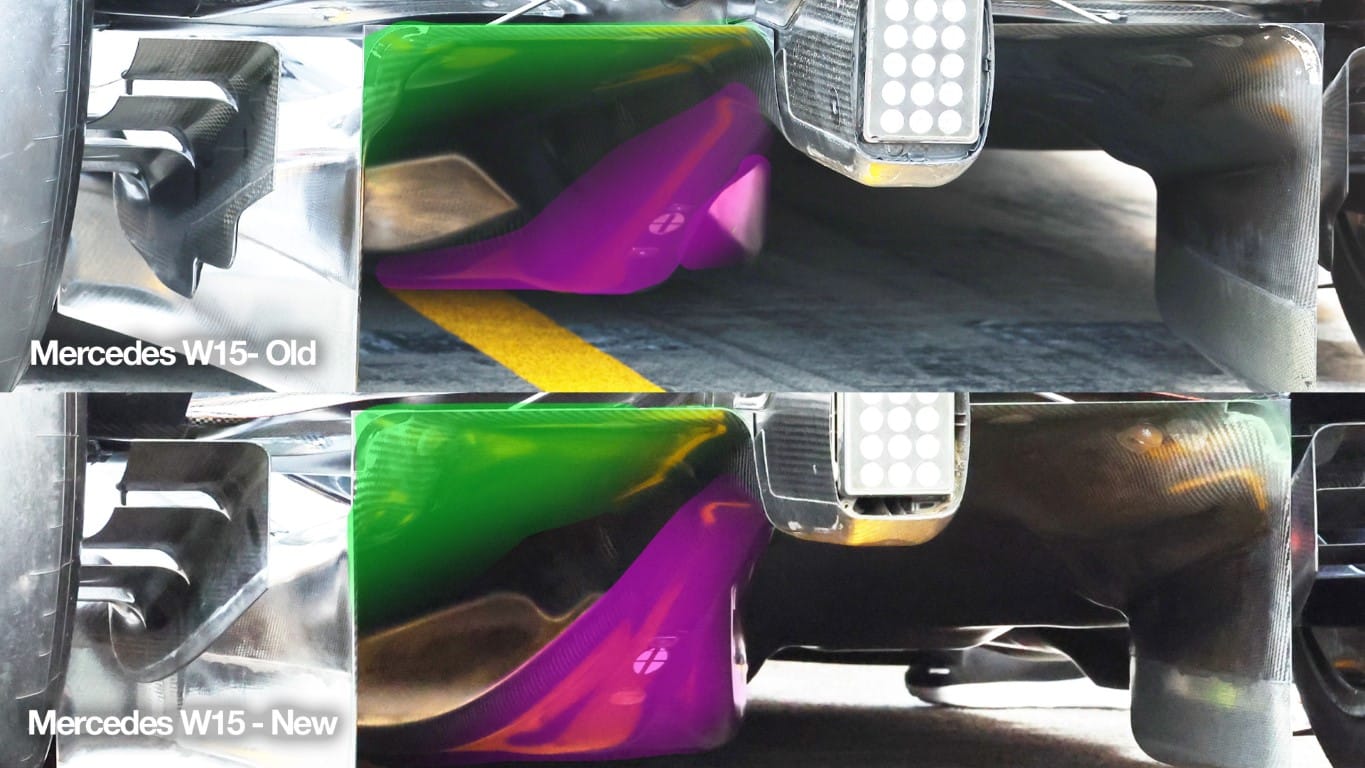
This is not unusual with this generation of cars. The closer to the ground the floor is, the more powerful the ground effect. But control of phenomena like porpoising, control of the aerodynamic centre of pressure and resulting balance implications are among the fine details that dictate whether that downforce is actually usable across the full corner-speed range, or if it causes more problems.
"Over the last three races, we've done various compares of the packages principally comparing the floor, and what we are confident in is that it's generating the load that we expect," said Shovlin. "It's important to note this was not a very large gain that we were expecting, it was quite a small package that we introduced, but we're confident that it is generating that load.
"The more difficult question that we need to answer is: is there anything subtle in the handling characteristics that this package might be doing that we haven't anticipated? And that's quite difficult to assess, because the car will perform differently track-to-track.
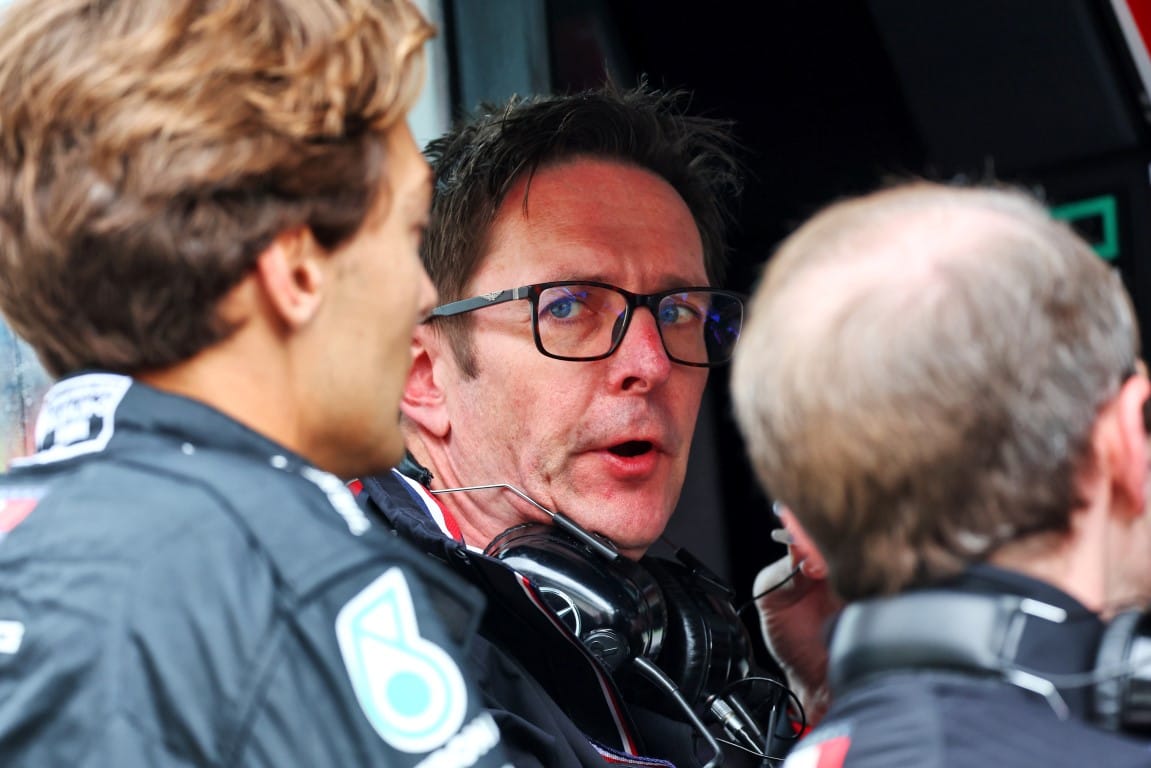
"Some tracks it's been working very well. Other circuits we've struggled with the balance of the car regardless of the aerodynamic spec, and yes, the last two races haven’t been as good as some of the ones that preceded them.
"It may well be that's just the normal variation from track-to-track, but that's what we're going to be looking at over the next few days, and on top of that there are other updates that we’re bringing into the system. There's quite a lot for us to consider, but we do have a lot of data now, and we can go off and use the next few days to learn what we can from that."
That process of analysis has led Mercedes to remove the floor from both cars in the pursuit both of answers and a stronger performance in Baku. However, Russell doubts that what's learned this weekend will be definitive, as well as promising a new floor is also not far away.
"I don’t think, no matter the performance this weekend, we will come away and conclusively say the floor was or was not the problem," said Russell. "We'll just get through this race weekend, see how we get on and it's not going to be too long until we have another new upgrade, which will change things once again."


